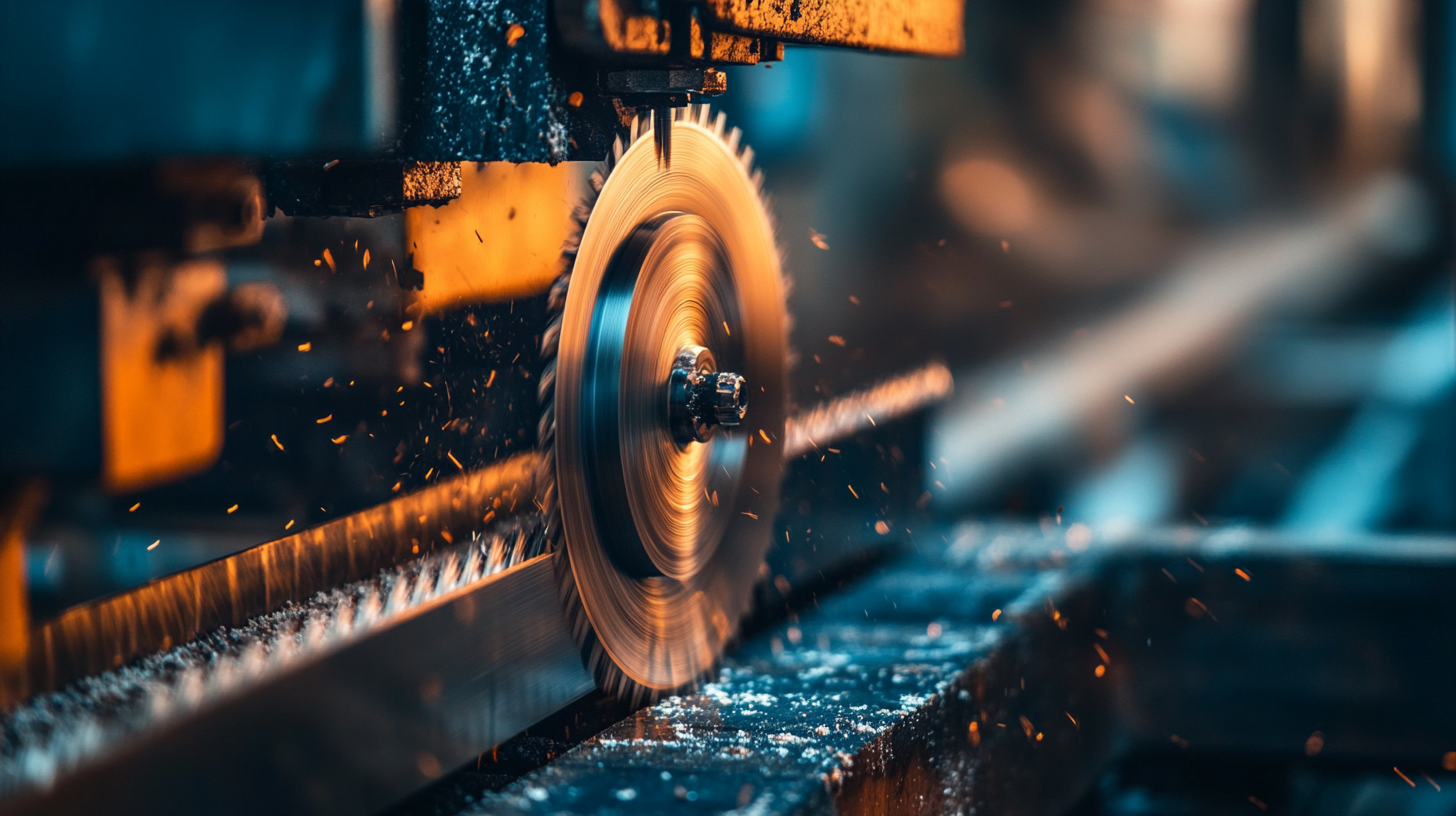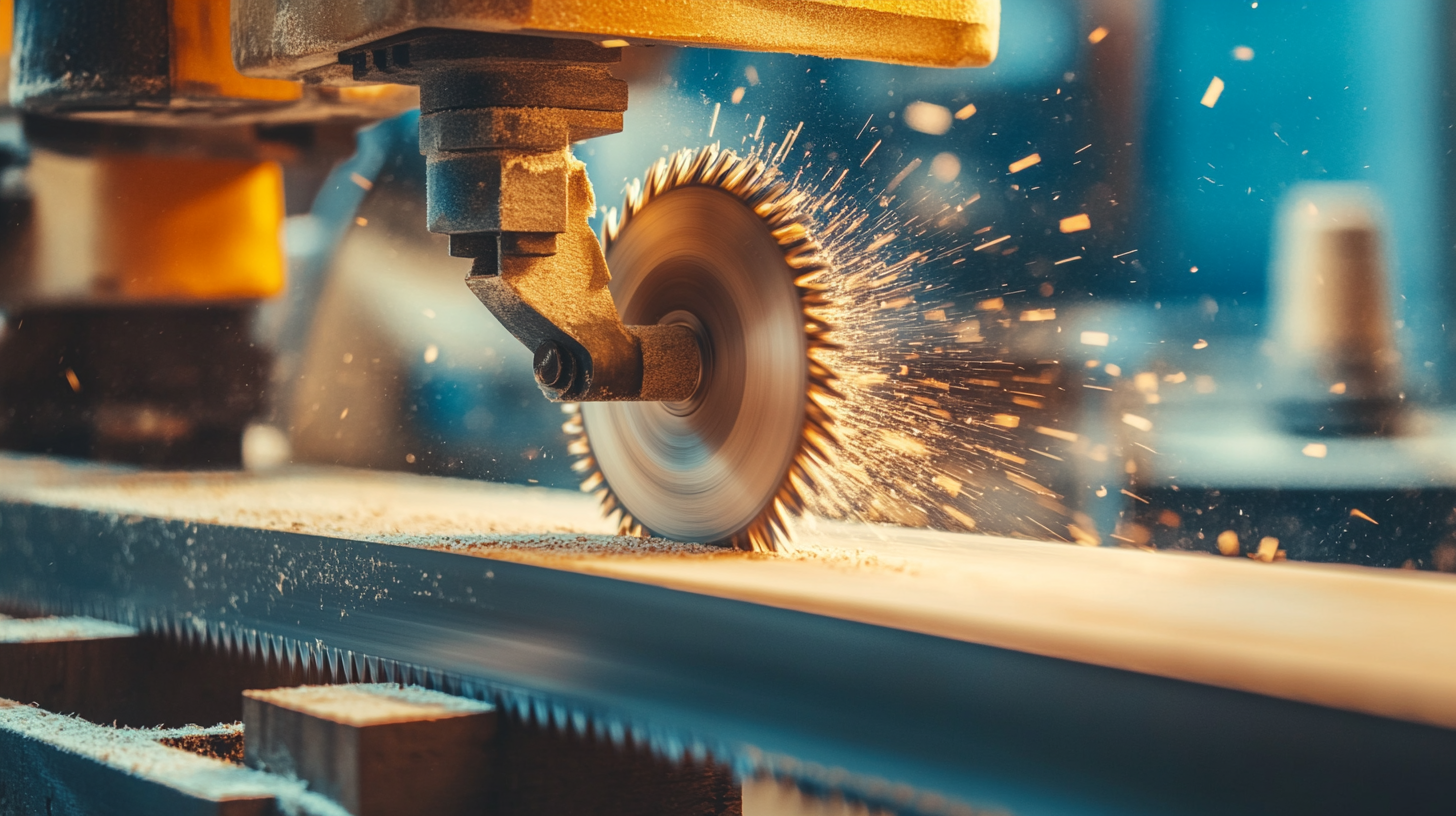China's Manufacturing Resilience Amidst US China Tariffs Boosts Demand for Best Reciprocating Saw Blades
In recent years, the trade tensions between the United States and China have led to a series of reciprocal tariffs that have strained many sectors of the global economy. However, amidst these challenges, China's manufacturing sector has showcased remarkable resilience, continuing to thrive despite the obstacles posed by tariffs. This unexpected growth has not only fortified China's position in the manufacturing landscape but has also fueled an increased demand for high-quality tools essential for various industries, particularly reciprocating saw blades. Known for their versatility and efficiency in cutting a range of materials, reciprocating saw blades have become a linchpin for construction and demolition projects. As manufacturers adapt to the changing economic dynamics and innovate in their offerings, the demand for robust and reliable reciprocating saw blades is set to rise, highlighting a unique opportunity for both manufacturers and consumers in navigating this complex trade environment.

China's Manufacturing Sector: An Overview of Recent Growth Trends
China's manufacturing sector has shown remarkable resilience even amidst the challenges posed by US-China tariffs. Recent data indicates a steady growth trend, with China's real GDP increasing by 5.2 percent in 2023 and projections suggesting a further growth rate of approximately 4.8 percent for 2024. This robust performance is largely attributed to the country's shift from an investment-led growth model to a focus on innovation and advanced manufacturing capabilities. Analysts observe that this transition is not just a response to external pressures but also a strategic move to enhance competitiveness in global markets.
Moreover, while the ASEAN region has historically benefited from China's manufacturing prowess, it now faces significant pressures as China's industrial overcapacity spills into the market. This has resulted in increased competition and a necessity for ASEAN countries to diversify their manufacturing bases. As such, demand for high-quality manufacturing tools, including reciprocating saw blades, is surging as manufacturers seek to maintain efficiency and productivity. Industry reports highlight that with China’s advancements in production technology, there is a growing emphasis on quality and innovation, which further drives demand for specialized tools that can meet higher production standards.
Impact of US-China Tariffs on Global Trade Dynamics
The ongoing US-China trade tensions have reshaped global trade dynamics, particularly impacting the manufacturing sector. According to a report from the International Trade Centre, tariffs imposed by the US on Chinese goods reached approximately $370 billion by mid-2023, leading to a significant shift in supply chains. Chinese manufacturers have displayed remarkable resilience, adapting to new market conditions and finding alternative avenues for growth. This resilience in the manufacturing sector has unexpectedly fueled demand for high-quality tools like reciprocating saw blades, reflecting a broader trend where companies seek to maintain efficiency despite external challenges.
Furthermore, a survey conducted by the National Association of Manufacturers revealed that nearly 60% of manufacturers in the US are considering sourcing raw materials and components from within North America to mitigate risks associated with tariffs and supply chain disruptions. As US companies increasingly turn towards robust and reliable tools, the demand for premium reciprocating saw blades has surged. Companies that produce these tools are capitalizing on this trend by enhancing product quality and diversifying their offerings, demonstrating how tariffs can inadvertently stimulate niche markets within the broader manufacturing landscape.

Strategies Adopted by Chinese Manufacturers to Enhance Competitiveness
China's manufacturing sector has demonstrated remarkable resilience in the face of ongoing US-China tariffs, prompting a surge in demand for high-quality reciprocating saw blades. To maintain and enhance their competitiveness, Chinese manufacturers are adopting a variety of innovative strategies. These include leveraging advanced technologies, optimizing supply chains, and focusing on product differentiation to meet the evolving needs of international markets.
One key approach is the integration of Artificial Intelligence (AI) into the manufacturing process. By utilizing AI across various stages of production, manufacturers can achieve significant improvements in efficiency and product quality. This not only helps in reducing operational costs but also enables companies to respond more swiftly to market demands. Moreover, the emphasis on sustainability and green practices in production is becoming increasingly important, allowing manufacturers to appeal to environmentally conscious consumers.
Additionally, in response to the pressures of international competition, Chinese manufacturers are actively seeking collaboration and partnerships on a global scale. This strategy not only aids in overcoming barriers but also facilitates knowledge exchange and resource sharing. As a result, these efforts contribute to building a robust manufacturing ecosystem that enhances the overall competitiveness of Chinese firms in global markets.
China's Manufacturing Resilience Amidst US-China Tariffs
This chart displays the percentage change in demand for reciprocating saw blades in China amidst US-China tariffs from 2021 to 2023. The data reflects the strategies adopted by Chinese manufacturers to enhance their competitiveness during this period.
Emerging Demand for High-Quality Reciprocating Saw Blades in Global Markets
In recent years, the global market has witnessed a notable surge in demand for high-quality reciprocating saw blades, largely driven by the resilience of China's manufacturing sector amidst ongoing US-China tariffs. As Chinese manufacturers adapt and innovate, they are not only meeting domestic needs but are also becoming key players in the international market. This has led to an increase in the availability of superior reciprocating saw blades that cater to various industries, including construction, woodworking, and metalworking.
The rising interest in premium reciprocating saw blades can be attributed to their enhanced performance, durability, and efficiency in comparison to standard options. As professionals and DIY enthusiasts alike prioritize quality and effectiveness, they are more inclined to invest in products that ensure better outcomes and longer life spans. With China's manufacturing excellence at the forefront, global distributors and retailers are eager to source these high-quality blades, recognizing that they can significantly enhance their product offerings and satisfy an increasingly discerning consumer base.
China's Manufacturing Resilience Amidst US China Tariffs Boosts Demand for Best Reciprocating Saw Blades - Emerging Demand for High-Quality Reciprocating Saw Blades in Global Markets
| Country | Market Demand (Units) | Growth Rate (%) | Avg Price per Blade ($) | Key Manufacturers |
|---|---|---|---|---|
| United States | 1,200,000 | 8.5 | 25.00 | DeWalt, Milwaukee, Bosch |
| China | 2,500,000 | 10.0 | 15.00 | Makita, AEG, Hitachi |
| Germany | 900,000 | 7.0 | 30.00 | Festool, Bosch, Metabo |
| United Kingdom | 650,000 | 6.5 | 28.00 | Black+Decker, Ryobi, Silverline |
| Canada | 400,000 | 5.0 | 22.00 | Milwaukee, Makita, Ryobi |
Future Outlook: Sustaining Growth in China's Manufacturing Landscape
China's manufacturing sector has shown remarkable resilience even in the face of ongoing US-China tariffs. This adaptability not only supports existing demand for high-quality products like reciprocating saw blades but also sets the stage for future growth. As manufacturers embrace innovative techniques and sustainable practices, they are better equipped to navigate international trade challenges and meet ever-evolving consumer needs.
To sustain this growth, manufacturers should focus on investing in automation and advanced technologies. Embracing Industry 4.0 principles can streamline production processes, improve efficiency, and reduce costs. Additionally, fostering strong relationships with suppliers and diversifying their supply chains can shield businesses from the impacts of tariffs and disruptions.
Furthermore, commitment to quality assurance remains paramount. By prioritizing the production of top-tier products, businesses can enhance their competitive edge both domestically and globally. Continuous training and upskilling of the workforce will ensure that employees remain adept at handling new technologies and methodologies, fueling ongoing innovation in the manufacturing landscape.
